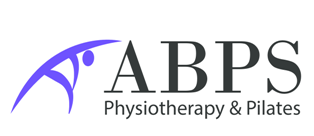Hip impingement: What is it and how can one get rid of it?
The Hip joint is a ball and socket joint which is formed from the head of the femur and a socket from the pelvic bone. Femoral Acetabular Impingement (FAI) has only been recognized as a medical condition relatively recently.

As the condition’s name implies, some soft tissue may get cause in between abnormally formed bone structures, causing repetitive compressive forces which lead to inflammation and degeneration of these structures.
Types of deformities
- Cam Lesion
A Cam lesion is when the depth of the neck of femur has less depth than it should. You can see it as an extra ‘bump’ on the bone which comes in contact with the pelvis earlier than when you would expect the end of range of the hip joint to be.
- Pincer Lesion
This is when the socket has an extension –‘lipping’ which again causes compression especially with hip flexion and inward movement towards the midline. Repetitive impingement can lead to degeneration of the hip cartilage – labral tear and eventually to osteoarthritic changes.
Symptoms
The most common complaint is that of a deep ache in the groin area. Aggravating activities usually involve prolonged sitting and walking. Frequently these lesions are noticeable bilaterally but often only one side is symptomatic. There may be clicking, locking and weakness associated with this groin pain.
It is not uncommon that other complications arise and sometimes a patient may present with Low Back Pain or knee pain. It is important for the clinician to perform a thorough examination and differentially diagnose as further examination may be required and the right area has to be radiologically assessed.
Treatment
- Conservative treatment
This should always be considered unless the pain is so debilitating that it affects quality of life. It is important to discuss the following with your physiotherapist:
– ergonomics
– sporting activities
– habits
Your physiotherapist will assess joint mobility, muscle strength and musculo-tendinous flexibility. Physiotherapy treatment may include lumbo-pelvic mobilisation/manipulations, loosening of tight soft tissue structures with manual techniques, stretching and possibly acupuncture and strengthening of gluteal, hamstring and quadriceps muscles. A hip block injection may be useful both to confirm diagnosis and also to allow a therapeutic window for rehabilitation.
- Surgical treatment
This is usually done arthroscopically (key-hole surgery). An osteotomy may be performed where the ‘extra’ bit of bone is excised and efforts to salvage cartilage. In advanced degenerative cases, an open surgery may be opted for and hip resurfacing or replacement is performed.
In either of these approaches, the role of the physiotherapist is important to deal with pain management, rehabilitate and manage the gradual reintroduction of activities.
For further information on physiotherapy or how to go about getting referral to top consultants kindly contact us on [email protected], 020 8123 3232 or 07523067482
Further reading
Minimally invasive surgery effective in athletes with common hip problem
Femoroacetabular Impingement (FAI)
Disclaimer The Author provides the Site and the services, information, content and/or data (collectively, “Information”) contained therein for informational purposes only. The Author does not provide any medical advice on the Site, and the Information should not be so construed or used. Using, accessing and/or browsing the Site and/or providing personal or medical information to the Author does not create a physician-patient relationship between you and the Author. Nothing contained in the Site is intended to create a physician-patient relationship, to replace the services of a licensed, trained physician or health professional or to be a substitute for medical advice of a physician or trained health professional licensed in your state. You should not rely on anything contained in the Site, and you should consult a physician licensed in your state in all matters relating to your health. You hereby agree that you shall not make any health or medical related decision based in whole or in part on anything contained in the Site.


